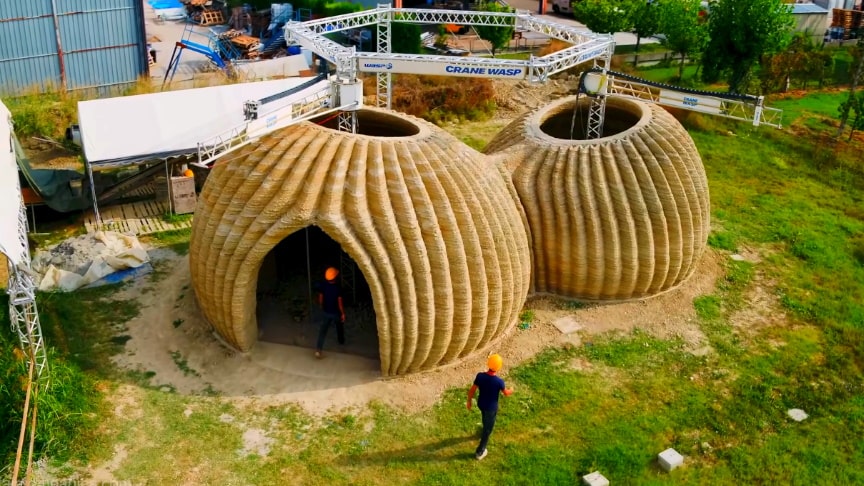After years creating machines to 3D print rubber, recycled plastics, clay and geopolymers, the Italian start-up WASP created a printer capable of printing a home for the cost of the dirt. In 2018, the team printed their first home in 10 days using local earth (30% clay, 40% silt, 30% sand), 40% chopped rice straw, 25% rice husk and 10% lime. “Gaia” cost 900 euros in materials for 30 meters of wall. The round-shaped structure relied on a wooden roof and beams for support.
source/image(PrtSc): Kirsten Dirksen
Three years later, WASP printed an all-earth two-domed home dubbed TECLA (Technology + Clay) using two synchronized printing arms, which were programmed to pick, mix and pump materials into layers. At their headquarters in Massa Lombarda, Italy, it took 200 hours, 7000 machine codes and 6kw of energy to print the 350 layers of clay.
WASP (World’s Advanced Saving Project) is the brainchild of father-daughter team Massimo and Francesca Moretti. Launched in 2011 when Francesca, a designer, began tinkering with early 3D printers and introduced her electronic technician father to the tech. Massimo, inspired by nature – and specifically the mason wasp which builds its own nest with material recovered from the surrounding environment – he began designing a 3D printer capable of building houses with local, natural materials “at a cost tending to zero”.
Advertisement
In late 2021, WASP worked with fashion house Dior to print a pop-up store in Dubai covered in their signature Cannage motif (3D printed using clay, sand and raw fibers). The same year, they used the Crane 3D printer to create the “livable sculpture” titled “House of Dust”; it took 50 hours of 3D printing, 500 G-codes, 165 15mm-layers, 15 kilometers of extrusion, and eight cubic meters of material to print the 16-square-meter habitable structure in Wiesbaden, Germany./Kirsten Dirksen











